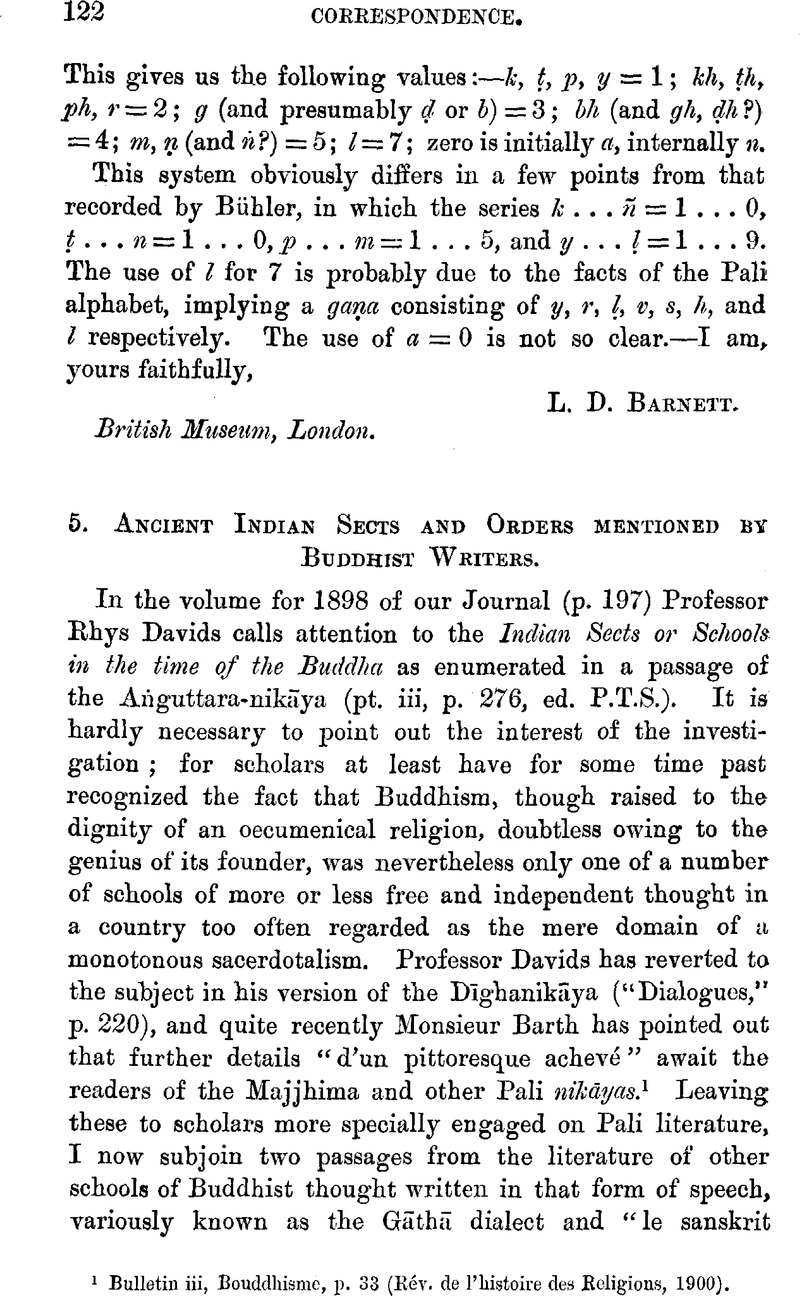No CrossRef data available.
Article contents
5. Ancient Indian Sects and Orders mentioned by Buddhist Writers
Published online by Cambridge University Press: 15 March 2011
Abstract

- Type
- Correspondence
- Information
- Copyright
- Copyright © The Royal Asiatic Society 1901
References
page 122 note 1 Bulletin iii, Bouddhisme, p. 33 (Rév. de l'histoire des Religions, 1900).
page 123 note 1 Quoted in the Çikshāsamuccaya, ff. 149a sqq. The Çikshās. was first translated into Tibetan by three paṇḍits, all of whom flourished under a Tibetan king who died a.d. 838.
page 123 note 2 Another parallel case is the dhāraṇī-literature forming the basis of the notice of non-Buddhistic sects by Rémusat at pp. 145 sqq. of his version of Fa-Hian (English edition). Mr. Waters tells me that Nos. 84 and 422 (Mahādharmolkā-dhāraṇī) in Nanjio's form further cases in point.
page 124 note 1 The Tibetan version appears to take these words as denoting subdivisions of the Ājīvikas.
page 124 note 2 Probably one of the very oldest Mahāyāna-books. I propose shortly to publish fragments of a MS. of it assignable to the fourth or fifth century.
page 125 note 1 So, too, Lalitav., 2, 22: anyatīrthika śramaṇa - brāhmaṇa - carakaparivrājakā.
page 125 note 2 Apānako in the same passage would seem to suggest that apipāsā is the right reading in Milinda-p., p. 191, n. 7.
page 125 note 3 M. Vyutp., § 175, Av.-Çat., Tale 40.
page 126 note 1 Separately mentioned by Buddhaghosa, loc. cit. Compare Hörnle's amusing note (11).
page 126 note 2 Reference given to me by Professor Davids. Now translated by Dr. Neumann. For the go-vrata see also Mahābh. Udyogap., xcix, 14. Mṛgacaryā is referred to ibid., cxxi, 20.
page 126 note 3 Rhys Davids' tr. Dīghanikāya, p. 227, n. 1. Some of the practices referred to in lines 18, 19, are also attributed to the Ājīvikas in Jātaka, vol. i, p. 493. If the rather obscure language of 1. 19 can be understood to mean that the man slept and lived in a kind of cage or contrivance of poles, some of the difficulties in the Pali passage referred to by Professor Davids, op. cit., p. 228, n. 1, would disappear. The Tib. is gtun-śiṅ = ‘pestle-wood’; and Jäschke, s.v. gtun, satisfactorily explains the kind of large instrument intended.
page 126 note 4 Echoed in a similar Jain tradition (Bhagavatī, translated by Hörnle, Appendix to Uvās.-d., p. 4 med.). In the shipwreck described in Av.Çat., Tale 81, it is curious to find invocations offered, first to the ‘six doctors,’ then to the Hindu gods, and lastly to Buddha.


